Houston | At Sea | Cozumel | Roatan | Belize | Cancun | At Sea || Ship Details
Day 3: Cozumel, Mexico |
|
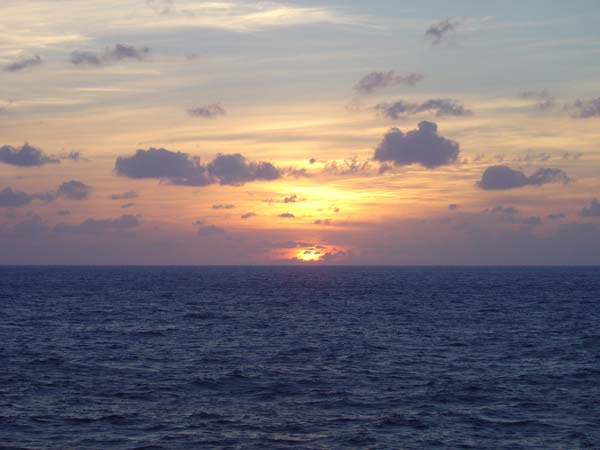 |
Sunrise as we get ready to hit Cozumel, Mexico. |
 |
I think the ship off our port side was some Pirate ship that you could pay a zillion bucks to see how pirates lived. |
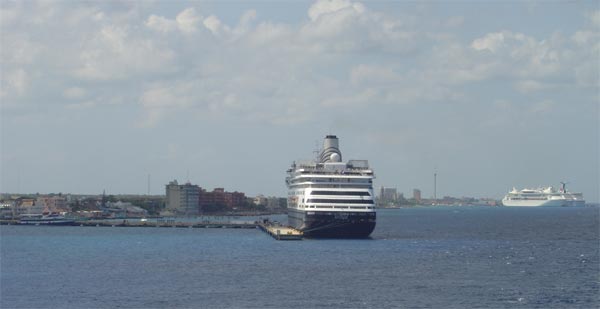 |
Our ship had to do a 180* turn in order to back in next to this black & white ship. Didn’t know a huge ship like this could turn on a dime. Carnival Cruise Lines had 3 “big” ships off in the distance. |
 |
Bunch of shops. We spent a couple hours here. |
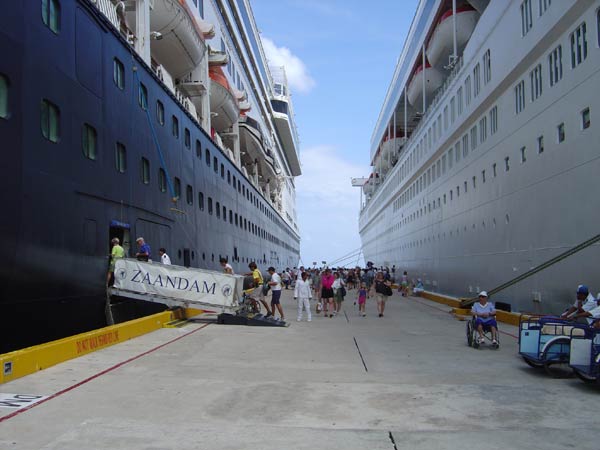 |
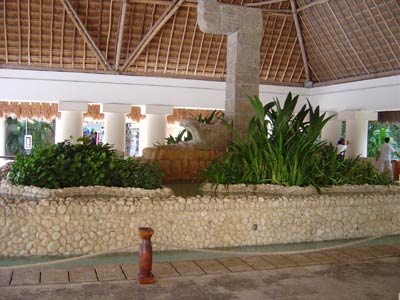 |
We unloaded from the ship in Cozumel and quickly went in search of a cab. For $10, the cab driver took us on a 10-minute ride to Chankanaab National Park, a park with a beach and dolphin swim area.Interesting entrance to the park |
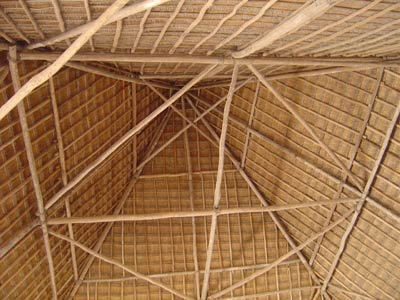 |
|
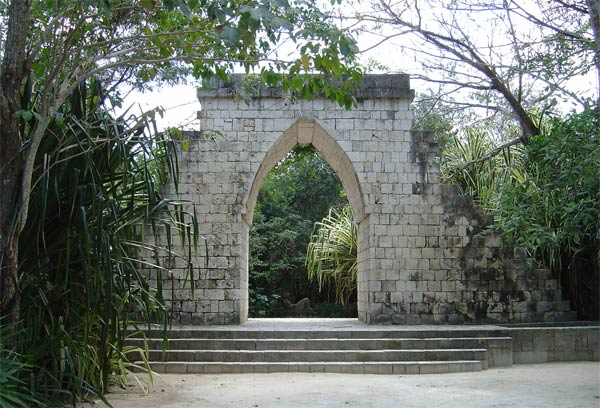 |
In the park there was a small trail with replicas of Mayan and pre-Mayan artifacts. We didn’t intend to stay long, but the guide was quite informative and we stayed about 45 minutes. Well worth it. |
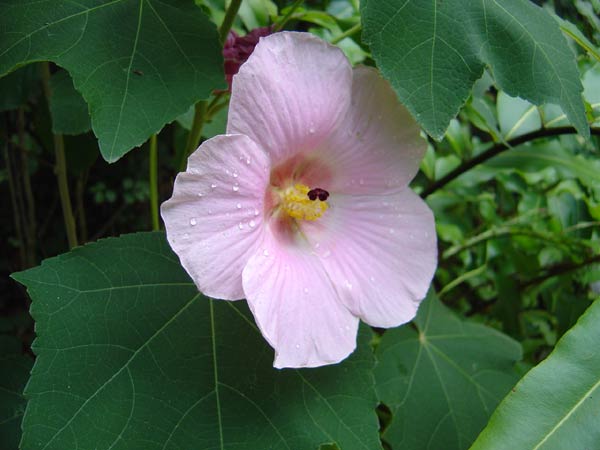 |
Did I mention the lush vegetation? |
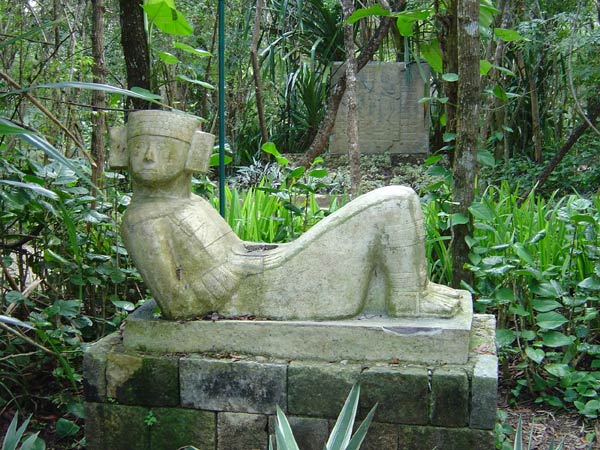 |
A Mayan altar. |
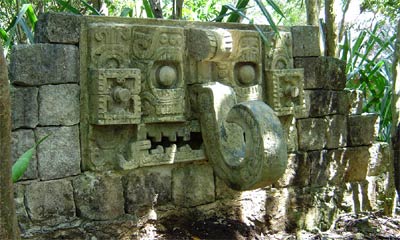 |
Elephant? Shouldn’t be, but…Since elephants aren’t native to this continent, this is supposed to be a ..a ..a snake, says our guide. And I’m thinking “it looks like a duck, sounds like a duck and smells like a duck, it must be an elephant”. |
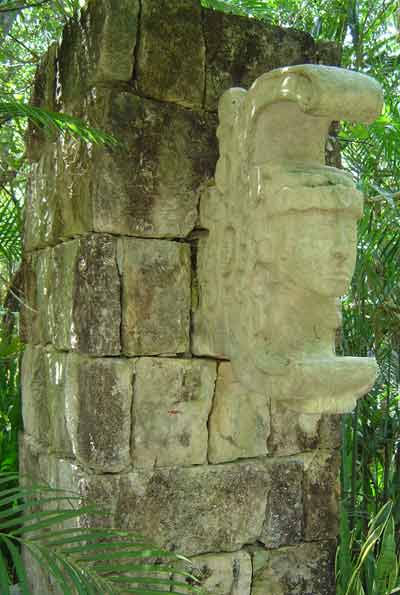 |
The snake figured prominently in Mayan culture. This is a representation of a snake’s mouth with a human head in it.I’m about ready for lunch. You? |
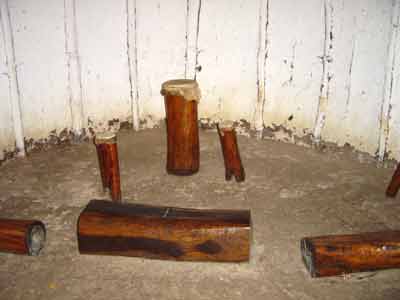 |
Mayans lived in huts. This is the living room, with several drums. They used drums to communicate from village to village. |
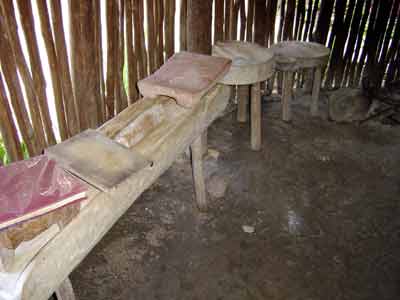 |
The kitchen didn’t have stucco in the walls. This allowed air to pass through and keep the kitchen from getting hot. Normally there would be a lady in this room serving torillas to visitors. She was on vacation.The floors were almost rock hard. Just regular dirt, but there wasn’t much topsoil. |
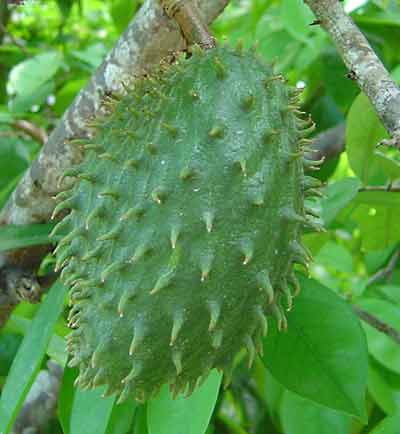 |
Some kind of sweet fruit. |
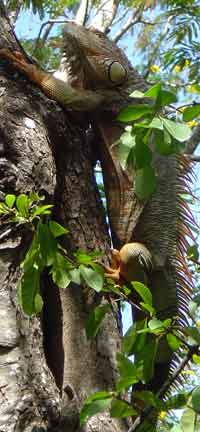 |
Mr. Iguana. When our guide was talking about something or another, I heard a rustle in the tree and ran over to snap this photo. His body was about 2′ long, and the tail was another 2′. |
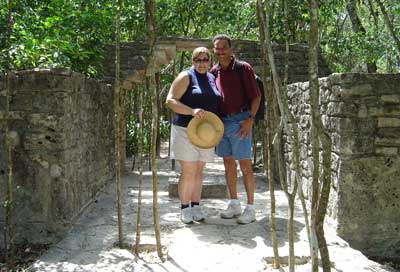 |
|
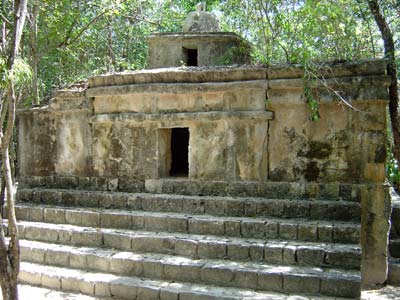 |
This was a light house. They’d put firewood into the small openings on bottom. This life-size structure was only about 7′ tall. The openings were about 1′ wide.The Mayans would place different sized conch shells in the top of the structure. As the wind would blow, it would create a different sound depending on the direction of the wind. The people could determine the direction of the wind just by the sound. Wish I’d thought of that! |
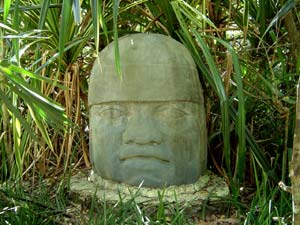 |
Imagine walking through the jungle and finding this head waiting to greet you. These heads were carved from solid stone and were almost 5′ tall.They were created by the Ulmecs, the “rubber people”, the earliest inhabitants of the Americas – ancestors to the Aztechs and Mayans. |
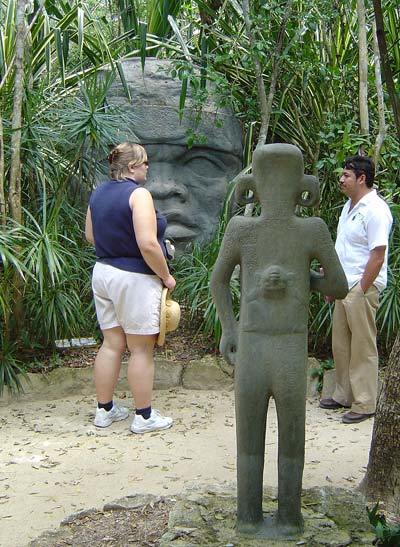 |
These heads date back to 2,000 BC (Abraham’s time!), roughly 4,000 years before Joseph Smith wrote extensively about advanced civilizations that were never found in these here parts. But that’s another story…The weird thing about these heads is that they were made of a stone that was NOT native to the area. Poor Ulmechs! For whatever reason, they dragged(??) these 5-ton stones from hundreds of miles away over hills and through jungles. Too bad they didn’t have elephants to help them drag them, eh?
No one knows why they went through all the trouble. I bet they were trying to impress some lady. Here’s Sheryl with our guide. I think his name was Ernesto. |
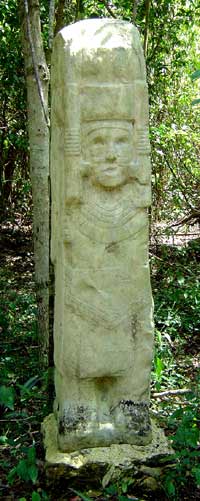 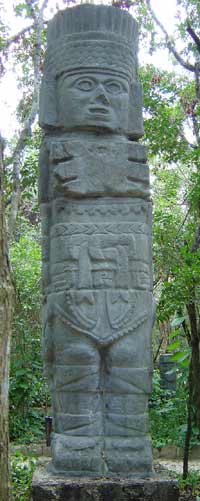 |
Don’t let the relative size of these statues fool you. The one on the left is about 5′ high, while the one on the right is about 20 feet tall.The taller ones were apparently used as pillars for support – like a Greek coliseum. |
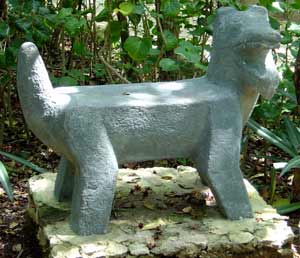 |
Wild dogs were part of the Mayan diet. This was also an altar. Offerings were put on the dog’s back. |
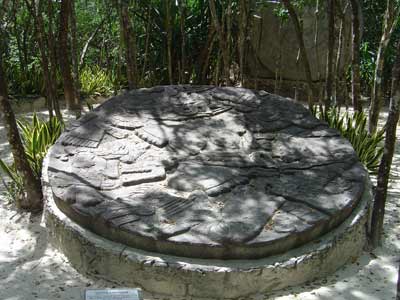 |
This is one of the more recent Mayan finds. It was uncovered while workers were repairing electrical lines in a subway tunnel. It’s 8′ in diameter and depicts a woman wearing festive/ornamental headress and clothes while dancing in some ritualistic fashion. This emblem is stamped on Mexican currency. |
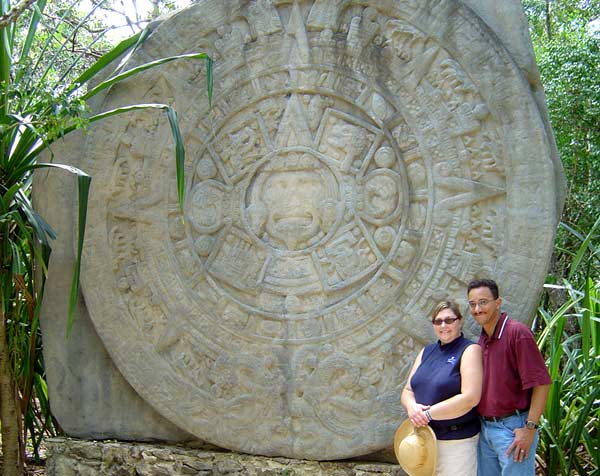 |
This is a Mayan calendar. The Mayans had a rather elaborate calendar consisting of 18 months. Each month consisted of 20 days. At the end of all this, they’d add 5 more special (holy?) days for a total of 365 days. They also had 4 seasons. The intertwining of their calendar was worked into many of their sculptures, including the Mayan temple. Their temple had 4 sides (to represent each season). Each side (season) faced a co-ordinate (N/S/E/W) and had 91 steps leading to the top. At the top was a final step: 4 x 91 + 1 = 365. The silhouette of a snake was worked into the design of the steps’ shadow, and was only visible on March 21st and Sept 22 of each year. Smart people. |
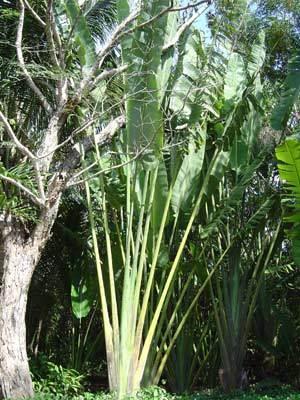 |
The lush vegetation was something to behold. I’d expect to pay a wad of cash for a 6′ tree like this from Home Depot. But this tree here was a good 25-30 feet tall.We went snorkeling after this. Wish I’d brought an underwater camera. The fish would swim up to you and hang around – just in case you wanted to feed them, I guess.
After swimming for an hour, we went back to the strip of shops near the ship. |
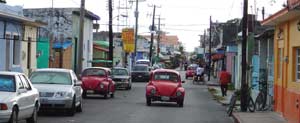 |
This is a block behind the shops on the ocean front. Not quite as touristy, but just as fun. |
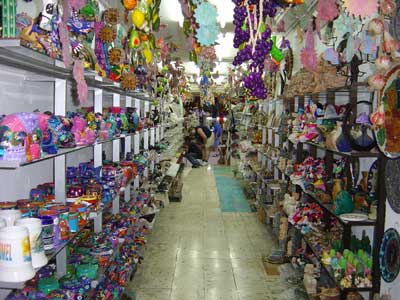 |
“Come in, come!! Please! Everything’s a dollar!””Hey, look, Sheryl.. this silver necklace is only ONE DOLLAR!”
“Yes sir! Just one dollar off the normal price!” “WHAT? Ok, fine. I’ll give you $2 for the necklace.” “No, sir. You don’t understand. This necklace is HEAVY silver. [takes out scale, weighs necklace and punches calculator] Heavy! Not cheap like other shops. Regular price 400 pesos. That $40. But for you, my friend, $30!” “Whatever. $3! That’s my final offer”. “You get out of my store!” Whoever said Mexicans don’t have a sense of humor? 😉 |
Houston | At Sea | Cozumel | Roatan | Belize | Cancun | At Sea || Ship Details
